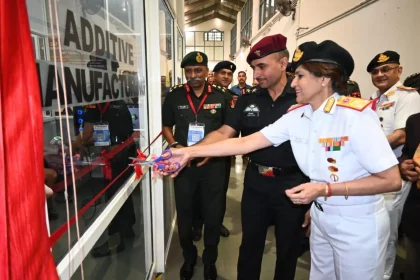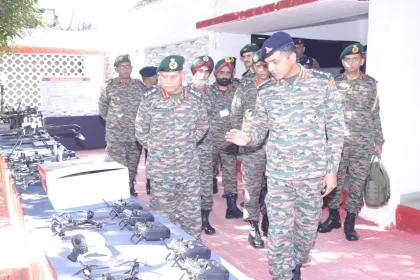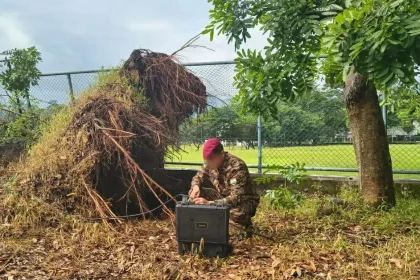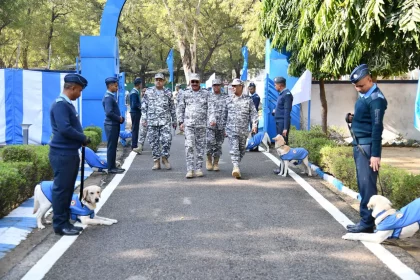DG EME Lt Gen Rajiv Kumar Sahni Reviews Drone Fabrication Facilities, Lauds Innovation at Vajra Corps
DG EME praises Vajra Corps’ soldier-engineers for advancing indigenous drone capabilities and strengthening operational readiness.
Surgeon Vice Admiral Arti Sarin Inaugurates CRE 2025 Programme at Artificial Limb Centre Pune; New Additive Manufacturing Lab Launched
Event focuses on advancing amputee rehabilitation and launches cutting-edge 3D-printing lab.
General Upendra Dwivedi Reviews Modernisation and Training Initiatives at Artillery Conference in Devlali
COAS Highlights Tech-Driven Transformation and Future-Ready Artillery Capabilities.
Operation Sagar Bandhu: Indian Army Restores Critical Connectivity in Cyclone-Hit Sri Lanka
Indian Army Team Restores Communication Lifeline After Cyclone Ditwah Damage.
Air Marshal Jeetendra Mishra Reviews Operational and Logistics Preparedness at Air Force Station Faridabad
AOC-in-C Reviews Training Standards, Logistics Readiness, and Security Enhancements at Faridabad Air Base.
Vice Admiral Sanjay Bhalla Awards Golden Wings to 16 Naval Aviators at INS Rajali
Sixteen Young Pilots Earn Golden Wings, Set to Join Frontline Helicopter Units.






